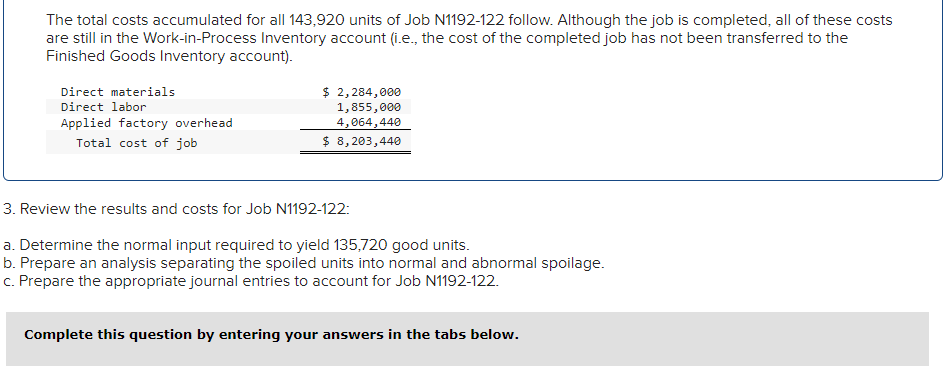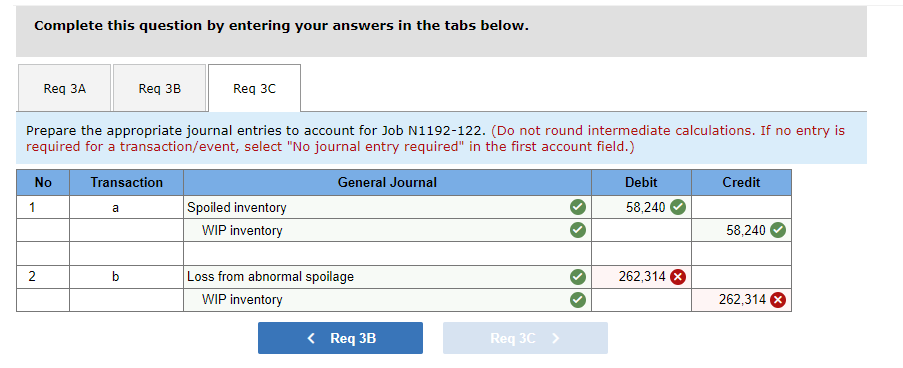Answered step by step
Verified Expert Solution
Question
1 Approved Answer
I'm guessing the loss from abnormal spoilage is about triple what spoiled inventory is. Required information [The following information applies to the questions displayed below.]



I'm guessing the loss from abnormal spoilage is about triple what spoiled inventory is.
Required information [The following information applies to the questions displayed below.] Richport Company manufactures products that often require specification changes or modifications to meet customer needs. Consequently, Richport employs a job costing system for its operations. Although the specification changes and modifications are commonplace, Richport has been able to establish a normal spoilage rate of 2.5% of total units produced (before spoilage is identified). The company recognizes normal spoilage during the budgeting process and classifies it as a component of factory overhead. Thus, the predetermined overhead rate used to apply factory overhead costs to jobs includes an allowance for net spoilage cost for normal spoilage. If spoilage on a job exceeds the normal rate, it is considered abnormal and must be analyzed. The cause of the spoilage must then be submitted to management. Randa Duncan, one of Richport's inspection managers, has been reviewing the output of Job N1192-122 that was recently completed. A total of 143,920 units had been started for the job, and 8,200 units were rejected at final inspection, meaning that the job yielded 135,720 good units. Randa noted that 920 of the first units produced were rejected due to a very unusual design defect that was corrected immediately; no more units were rejected for this reason. Randa was unable to identify a pattern for the remaining 7,280 rejected units. They can be sold at a salvage value of $8 per unit. The total costs accumulated for all 143,920 units of Job N1192-122 follow. Although the job is completed, all of these costs are still in the Work-in-Process Inventory account (i.e., the cost of the completed job has not been transferred to the Finished Goods Inventory account). 3. Review the results and costs for Job N1192-122: a. Determine the normal input required to yield 135,720 good units. b. Prepare an analysis separating the spoiled units into normal and abnormal spoilage. c. Prepare the appropriate journal entries to account for Job N1192-122. Complete this question by entering your answers in the tabs below. Complete this question by entering your answers in the tabs below. Prepare the appropriate journal entries to account for Job N1192-122. (Do not round intermediate calculations. If no entry is required for a transaction/event, select "No journal entry required" in the first account field.)Step by Step Solution
There are 3 Steps involved in it
Step: 1

Get Instant Access to Expert-Tailored Solutions
See step-by-step solutions with expert insights and AI powered tools for academic success
Step: 2

Step: 3

Ace Your Homework with AI
Get the answers you need in no time with our AI-driven, step-by-step assistance
Get Started


